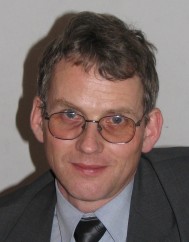 What I am working on...
What I am working on...  This page is always under development !
And not always up to date :-)
This page is always under development !
And not always up to date :-)
 What I am working on...
What I am working on...  Current activities
Current activitiesI work on estimating the sensitivity of experiments at future high energy e+e- colliders to possible signatures of physics beyond the Standard Model in the top quark sector. Large samples of produced tt pairs and clean environment of lepton collider should allow searching for rare top decays. Flavour Changing Neutral Current (FCNC) decays of the top quark are of particular interest as different extensions of the Standard Model predict significant enhancement of these channels, with branching ratios reaching even 10-2.
I presented first results of my study, based on the parton level simulation with WHIZARD, at Workshop on Top physics at Lepton Colliders in Valencia, in July 2015: Sensitivity to top FCNC decay t->ch at future e+e- colliders.
See also a seminar Searching for top FCNC decay t->ch at future e+e- colliders given at our Faculty in June 2015.
 This section is being rebuilt now
This section is being rebuilt now
I participate in the developement of a new approach to BSM searches, based on the combined analysis of the inclusive ep data, taking into account possible contributions from the ``new physics'' processes in the QCD fit. First limits were set on a radius of quarks, within the semi-classical quark form factor model.
I was responsible for development of the LUIZA framework for efficient analysis of astronomical images.
See also local GLORIA page (in Polish).
In 2009-2014 I served two 3-year terms as a representative of the Polish High Energy Community in the Restricted ECFA. I took part in about 20 RECFA visits to most of the CERN member states and major accelerator laboratories.
I participated in organization of the RECFA visit to Poland in May 2012. I gave an introductory overview talk on the Education and Particle Physics research in Poland.
Preparatory Group was responsible for collecting submissions from community, organization of the Open Symposium in Cracow (September 2012), preparation of the report summarizing the status and prospects of the field (so called Physics Briefing Book) and other documents for an Update of the medium and long-term European Strategy for Particle Physics. I was responsible for compilation of the Strong Interaction Physics chapter of the Physics Briefing Book.
I participated in the Strategy Group meeting in Erice, Italy (January 2013), where the final draft of the Strategy Update was prepared. The document was finally approved by the CERN Council in May 2013.
I also participated in the preparation of the Polish Particle and Astroparicle Physics Roadmap, submitted as the contribution to the Strategy Update.
The sensitivity of THERA to different contact interaction models has been studied in detail. For models conserving parity, scales up to about 18 TeV can be probed at THERA, extending considerably beyond the existing bounds. Significant improvement of existing limits is also expected for models with large extra dimensions. Effective Plank mass scales up to about 2.8 TeV can be probed. THERA will be the best machine to study leptoquark properties, for leptoquark masses up to about 1 TeV. It will be sensitive to the leptoquark Yukawa couplings down to ~0.01.
You can find more details in:
More about physics at THERA:
Measurement of the Yukawa couplings of the first-generation leptoquarks has been studied for e+e- collisions at TESLA, at sqrt(s)=800 GeV. By combining measurements from different production and decay channels, determination of Yukawa couplings with precision on the few per-cent level is possible. TESLA will be sensitive to very small leptoquark Yukawa couplings not accessible at LHC, down to ~0.05 e. Distinction between left-handed and right-handed Yukawa couplings is feasible even for leptoquark masses very close to the pair-production kinematic limit.
You can find more details in:
More about e+e- physics at TESLA:
You can find more details in:
You can find more details in:
You can find more details in: